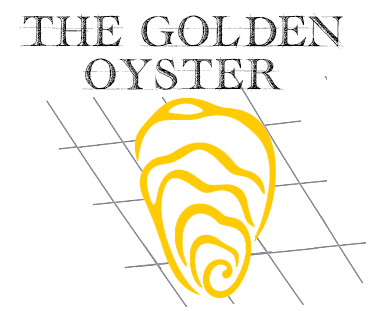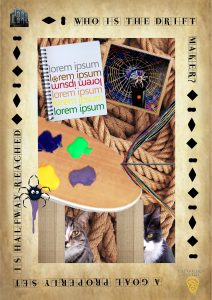Here are some tips for armchair treasure hunters, they’re not specific to this hunt, so they are not ‘clues’ as such. I’ve followed this hunting hobby since the days of Masquerade and I think these are some pointers that should apply to any hunt.
Did you seek a second opinion?
Cognitive bias is a danger when we attempt treasure hunts. We need a big imagination to get involved with this hobby, and it’s a normal part of this game to have a clever idea for a solution and fall in love with it. Then we look for confirmation that it’s right, and fail to see evidence that it’s not. A search partner, or honest friend, is the best antidote to this problem. Has someone else checked your method? Did they express doubts? Did they come up with alternatives or different angles? Did they ask good questions? An answer often ‘feels’ right to the clue solver, and we often have no way to be sure we are on the right tracks, but be prepared to be wrong! We don’t always see straight when we’re caught up in a hunt.
Have you found clear evidence for your chosen method?
Is there a clear confirmer in the hunt clues for the method you’re using? Most treasure hunts will flag the method to use, and won’t usually expect a hunter to imagine how a solution is arrived at. In fact most hunts will flag the method more than just once. Treasure hunt puzzles are vague by design, but most signal what to do in some slight way, and then signal again.
Did you consider coincidences?
This is a close cousin of the cognitive bias point! So you’ve got an idea for a solution, you’ve found two or three things that seem to confirm it’s right. One of those things might be an anagram of the treasure hunt title that turns out to vaguely reveal your method, but with the addition of some clumsy extra words. This would be a solver failing to consider coincidence. Anagrams with enough letters can be made to spell almost anything.
Is your solution simple?
Most hunts have an ‘unlock’ method that’s not overly complex. Eg. Follow the pointing finger, draw an X on a map, take the letter after the comma. If your hunt has a lot of steps, some of which are not signalled by the hunt creator, you’re probably drifting off course.
Are you bypassing some of the necessary steps?
Have you hastily leapt for a solution without solving the clues that are necessary on the way? Are you sure that each clue you think you have solved is right? In the case of the Golden Oyster a message on the front page mentions there are 21 locations to find. It would be wise to find all of those, and be quite sure of them, before finalising a solution. Forrest Fenn suggested there were 9 clues in his poem. Max Valentin created 11 enigmas. I am pretty sure that 6 clues right, and 8 enigmas understood would not be enough to solve either hunt. Treasure hunt designer’s don’t tend to create additional content that has no purpose. Though I do need to qualify this by saying it’s not a certain rule! Masquerade was one treasure hunt with a lot of pictures and words that turned out to have little bearing on the solution. Plus design-wise books of clues will have elements that make the pages visually appealing, perhaps adding a few playful cats just for fun! This leads on to…
Have you considered the red herrings?
Some treasure hunts will subtly hint at where the red herrings lie. Some treasure hunts have no red herrings at all. It is worth considering the fact that treasure hunt creator’s have a wicked side, and will throw things into a hunt purely to confuse the game’s players. I don’t think this is terribly sporting, but it’s a Thing! While my last point suggested the content of a hunt usually has a purpose, sometimes that content is deliberately deceptive. If we wanted an easier challenge I suppose we’d all do crossword puzzles!
Do you know what you don’t know?
Have you been honest about your weaknesses? A well designed hunt won’t waste words. If there are elements you don’t understand you probably haven’t solved the hunt yet. Work on the bits you don’t know. I think it’s useful to confront these knowledge gaps, rather than avoiding them. This can lead to breakthroughs. This is particularly the case if they’re the bits everyone else is avoiding, and that no one understands!
Do you know when to stop?
Trying to solve treasure hunts is a fun hobby, but inevitably frustrating at times. I’ve spent years trying to solve the Golden Owl hunt. I have one idea that seems unique and interesting, and I’ve adapted the method 50 different ways. It’s tempting to think that try number 51 will be the breakthrough… But I stepped away. Taking a break and getting a little distance is a good thing. I was reminded of that famous quote attributed to Einstein*, “The definition of insanity is doing the same thing over and over again, but expecting different results.” I now accept that my smart idea is almost certainly not the answer. Or, at least, if I do go back to it I need a major new perspective on using the method. This is supposed to be a fun hobby, but I see lots of people work too hard at a hunt and then the enjoyment fades away. It can be good to look at new hunts and not just play one. It is also a help to connect with others and hear their ideas. I’m a big fan of joining communities and participating in forum discussions. There are also a few Zoom groups meeting to discuss hunts. I’d love to start one to discuss Golden Owl one day.
Additional clues
It’s very tricky as a hunt creator to set the difficulty level just right. I didn’t want the Golden Oyster to be solved too fast, but I’ve decided that if it remains unsolved a year I will give an extra clue or a few hints at this website. Good luck!
*Einstein didn’t actually say this.

